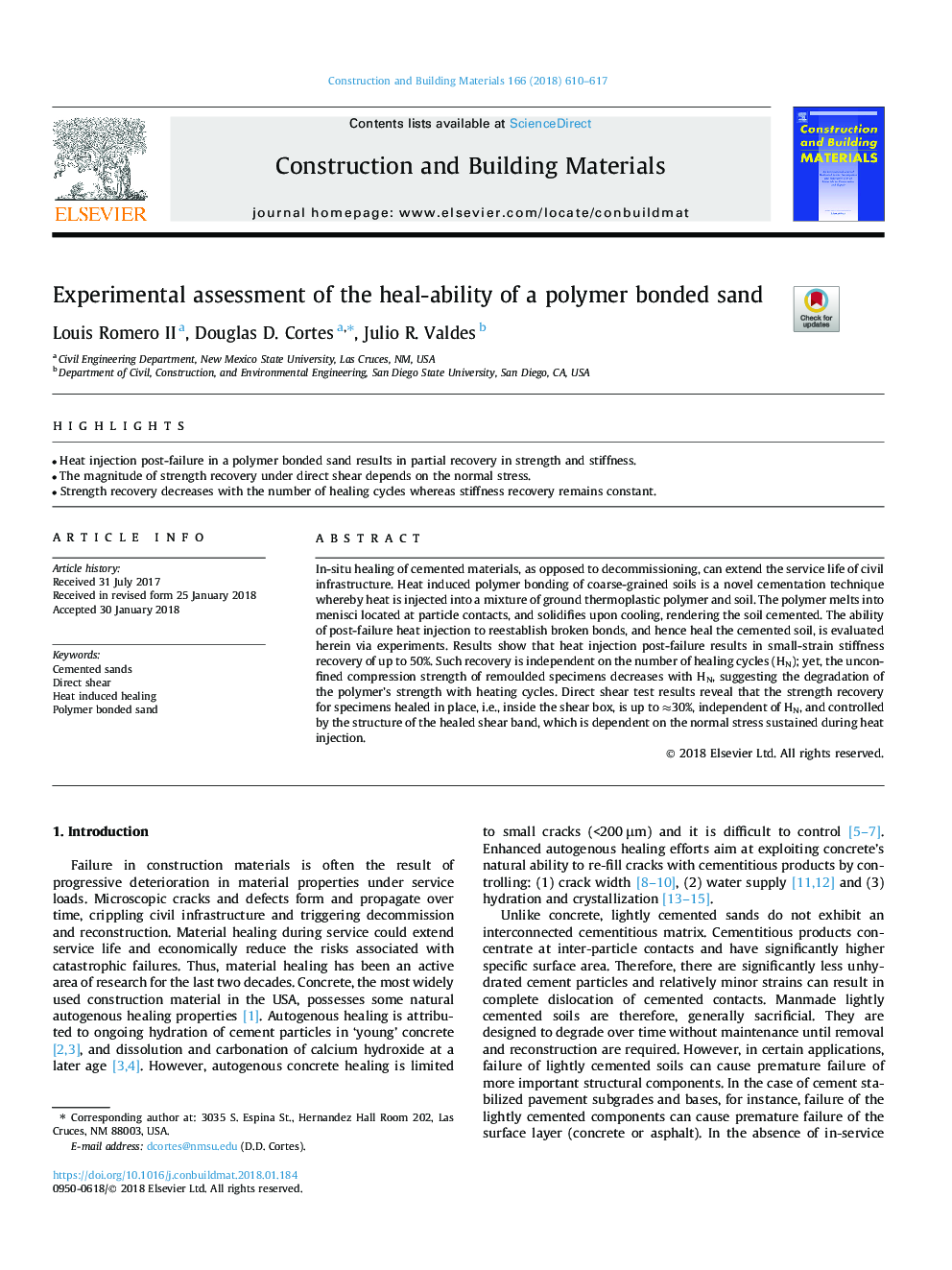| Article ID | Journal | Published Year | Pages | File Type |
|---|---|---|---|---|
| 6715362 | Construction and Building Materials | 2018 | 8 Pages |
Abstract
In-situ healing of cemented materials, as opposed to decommissioning, can extend the service life of civil infrastructure. Heat induced polymer bonding of coarse-grained soils is a novel cementation technique whereby heat is injected into a mixture of ground thermoplastic polymer and soil. The polymer melts into menisci located at particle contacts, and solidifies upon cooling, rendering the soil cemented. The ability of post-failure heat injection to reestablish broken bonds, and hence heal the cemented soil, is evaluated herein via experiments. Results show that heat injection post-failure results in small-strain stiffness recovery of up to 50%. Such recovery is independent on the number of healing cycles (HN); yet, the unconfined compression strength of remoulded specimens decreases with HN, suggesting the degradation of the polymer's strength with heating cycles. Direct shear test results reveal that the strength recovery for specimens healed in place, i.e., inside the shear box, is up to â30%, independent of HN, and controlled by the structure of the healed shear band, which is dependent on the normal stress sustained during heat injection.
Keywords
Related Topics
Physical Sciences and Engineering
Engineering
Civil and Structural Engineering
Authors
Louis II, Douglas D. Cortes, Julio R. Valdes,
